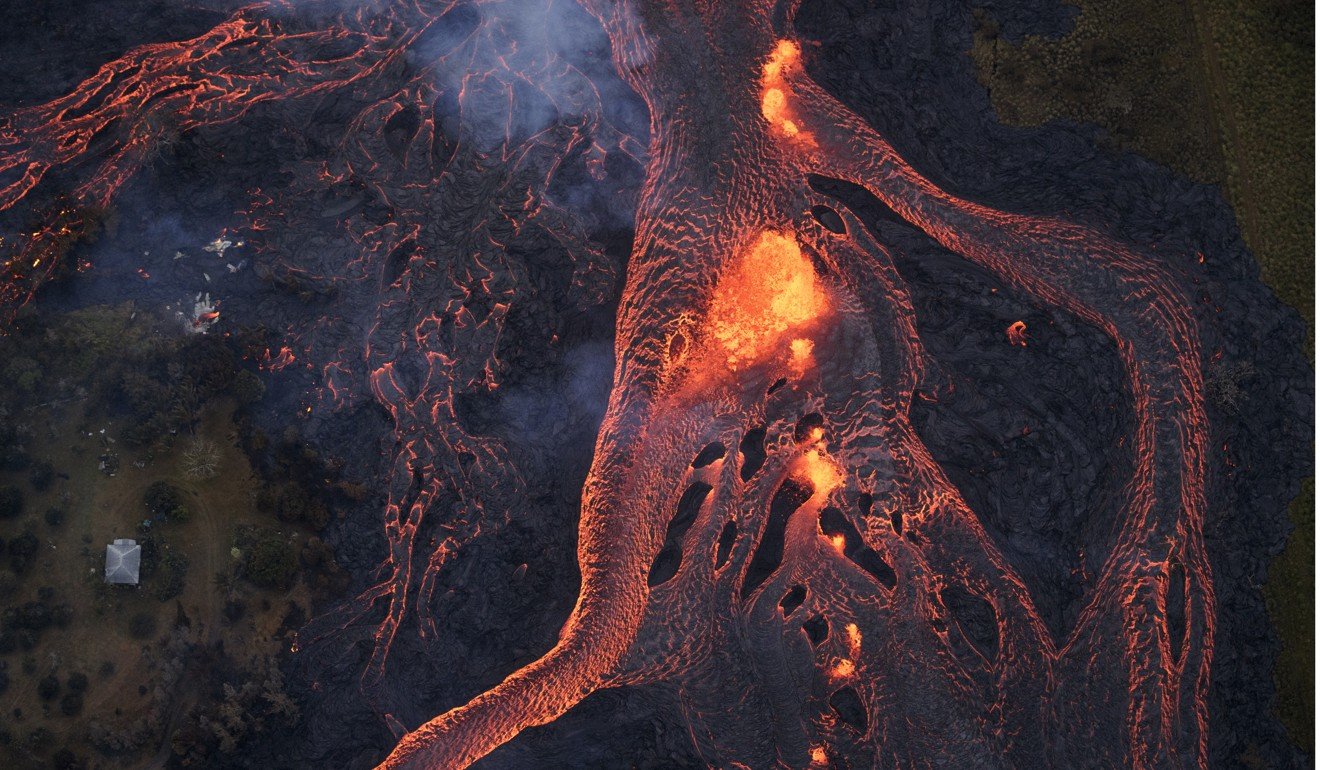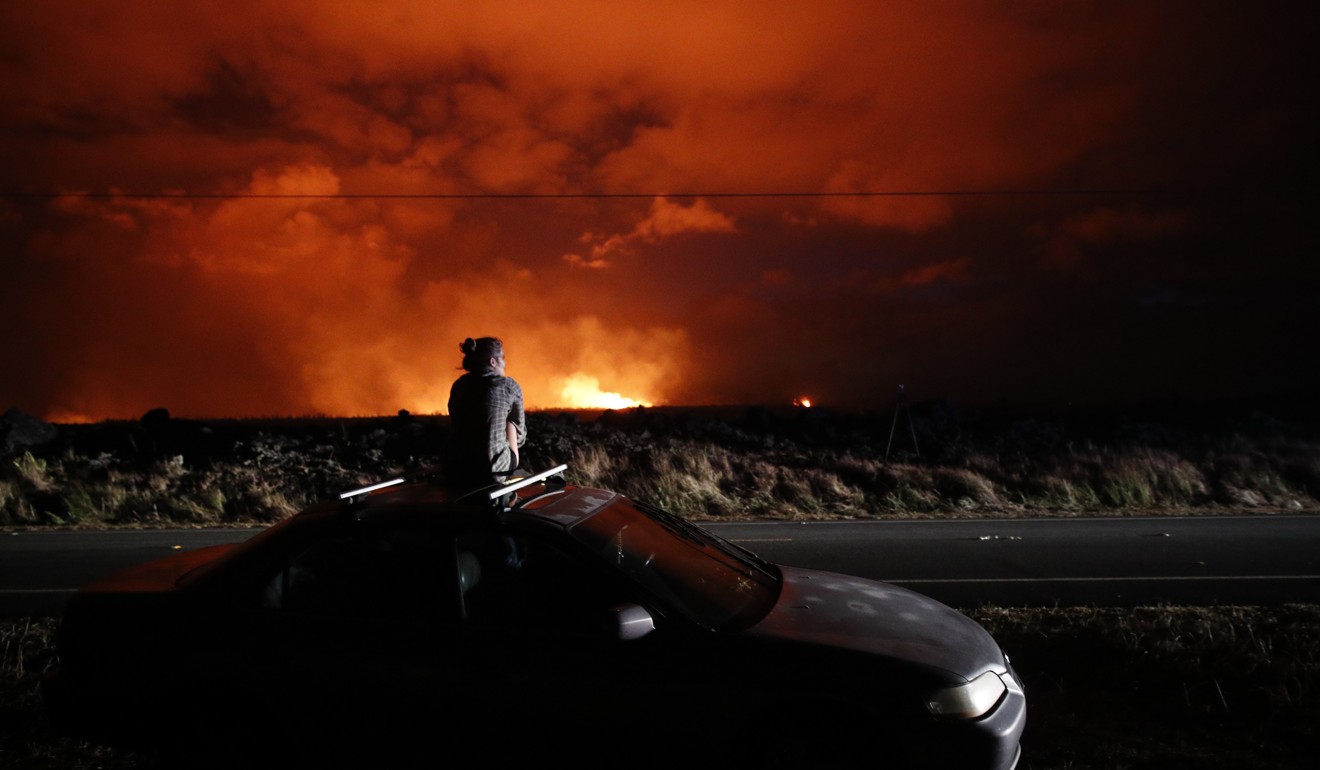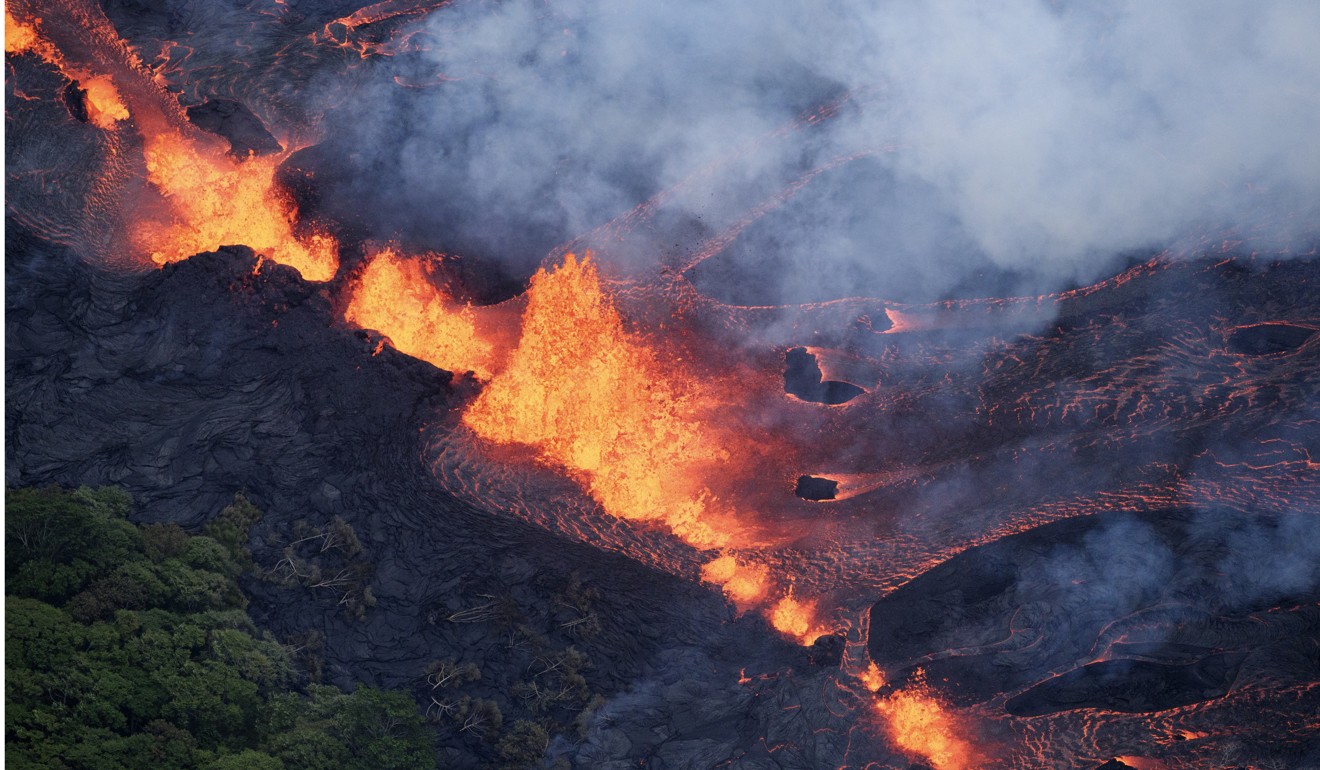
Lava rivers gush into sea, as molten rock smashes man’s leg in Hawaii volcano eruption’s first serious injury
Spectacular scenes as flows of lava from Kilauea accelerate
A volcano that is oozing, spewing and exploding on Hawaii’s Big Island has got more hazardous, sending rivers of molten rock pouring into the ocean Sunday and launching lava skyward that caused the first major injury.
Kilauea volcano began erupting more than two weeks ago and has burned dozens of homes, forced thousands of people to flee and shot up ash clouds from its summit that led officials to distribute face masks.
Lava flows have picked up speed in recent days, spattering molten rock that hit a man in the leg.


Lava that’s flying through the air from cracks in the Earth can weigh as much as a refrigerator and even small pieces can be deadly, officials said.
The injury came the same day that lava began streaming across a highway and flowing into the ocean.
The interaction of lava and seawater has created a cloud of steam laced with hydrochloric acid and fine glass particles that can irrigate the skin and eyes and cause breathing problems.
The lava haze, or “laze,” extended as far as 25km west of where the lava gushed into the ocean on the Big Island’s southern coast. It was just offshore and running parallel to the coast, said US Geological Survey scientist Wendy Stovall.
Authorities warn that the plume could shift direction if the winds change. The Hawaiian Volcano Observatory says sulphur dioxide emissions also have tripled.


He said residents can’t do much but stay informed and be ready to get out of the way.
“Here’s nature reminding us again who’s boss,” Kekedi said.
Scientists say they don’t know how long the eruption will last. The volcano has opened more than 20 vents, including four that have merged into one large crack. It has been gushing lava high into the sky and sending a river of molten rock toward the ocean at about 275 metres per hour.
The flows accelerated after newer lava began emerging from the ground late last week, creating spectacular scenes. The fresher lava is hotter and tends to move faster than the older lava that was unleashed earlier.
Scientists say the older lava is likely from magma that Kilauea has been storing underground since the volcano last erupted in 1955.

